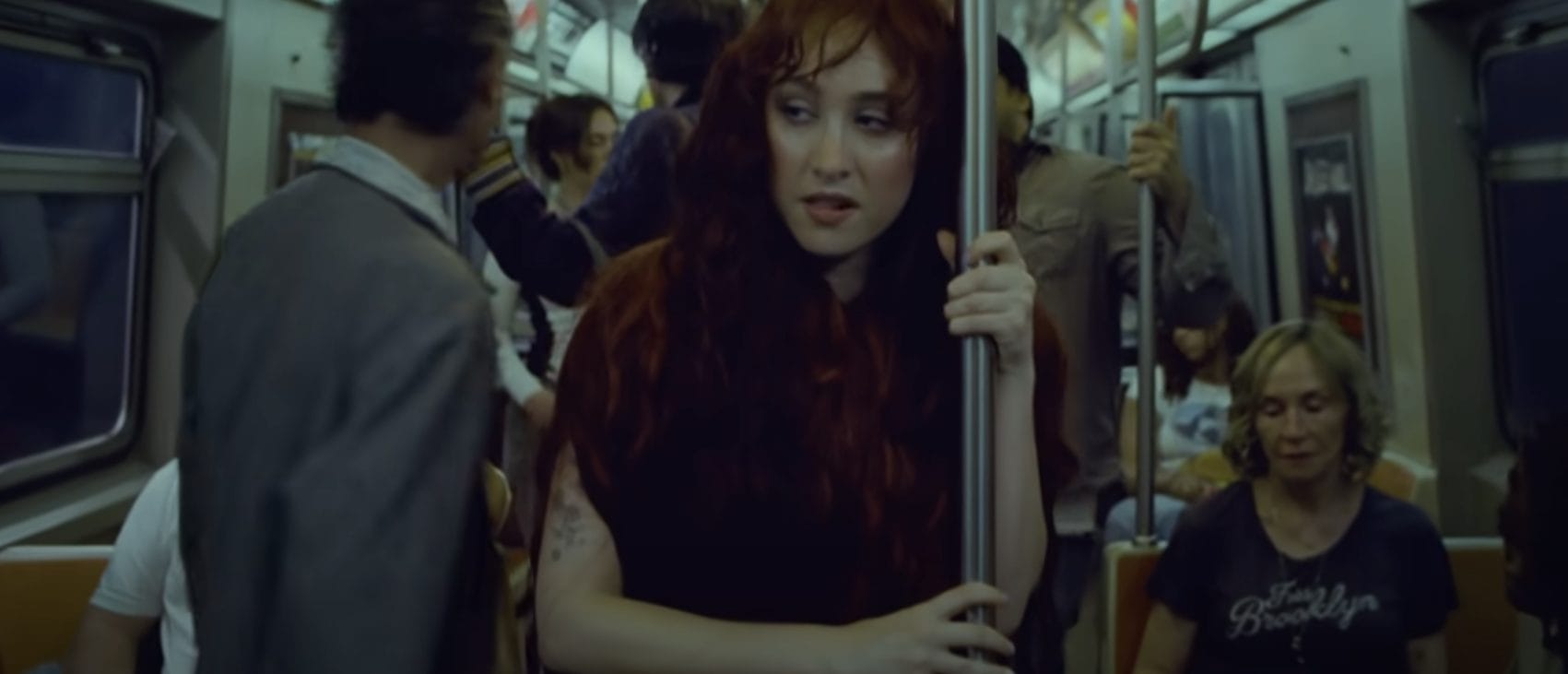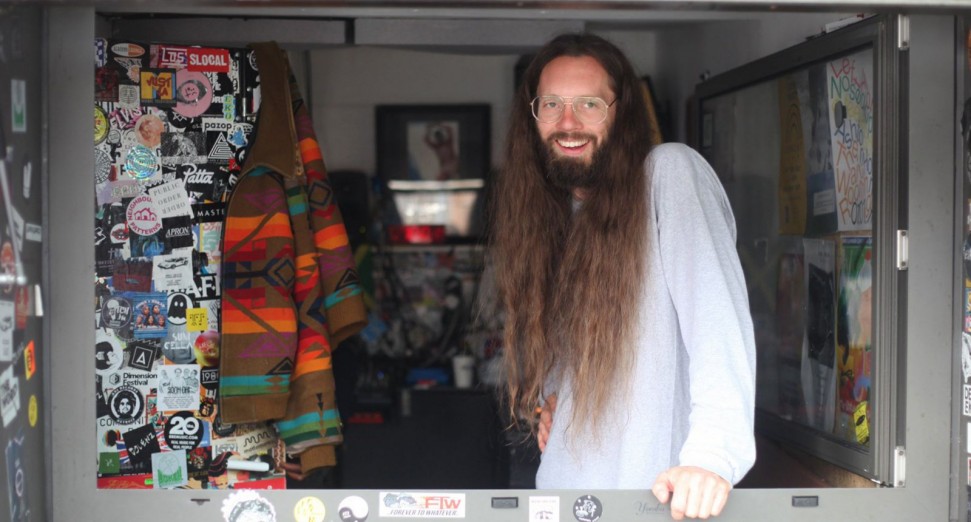
The Subway Chappell Roan Lyrics And Meaning: A Literary Approach to Understanding Heartbreak
Image credit: Object & Animal, Director of Photography Norm Li (taken from the music video embedded below)
So, Chappell Roan’s “The Subway” is really making waves right now—hitting number one on Spotify’s Daily Top Songs USA chart and climbing quickly on the Official Singles Chart in the UK. It’s become a fan favorite ever since she first played it live at Governor’s Ball back in 2024, and now it’s officially out, resonating with a ton of people. The song’s dreamy, regretful vibe is getting a lot of attention, and critics are calling it one of her most captivating works yet. What’s interesting is that this song is more than just a breakup ballad—it’s kind of an ode to New York City itself, mixing heartbreak with the city’s unique energy.
I come from a background in English literature and creative writing, so I wanted to use that love and study to unpack the lyrics more poetically.
But I think “The Subway” is a great excuse to stretch a bit and pull in some classic poetry and literary history to really see what timeless themes Chappell Roan is tapping into. Songs like this float around in the present as well as they connect to a long line of writers who’ve explored memory, loss, and the struggle to move on. So, as we go through the song, I’ll be drawing on poets like Elizabeth Bishop, Robert Lowell, and Anne Sexton to show how their work can help us understand what’s happening beneath the surface of these lyrics.
Right from the start, Chappell Roan uses very clear, strong images to show how memories hit hard. The green hair and the beauty mark are small details, but they stick out and bring the past flooding back. When she says, “There on the subway, I nearly had a breakdown,” she tells us how these little things can cause a big emotional reaction.
This shows how memories are tied to our senses. The subway is a place full of reminders. The green hair and beauty mark are like triggers that bring the pain into the present. This is very much like what Elizabeth Bishop does in her poem One Art. Bishop talks about loss being hard to control even when you try, saying, “The art of losing isn’t hard to master.” But later she admits it’s actually painful. Roan’s memories hit her in a way she can’t control, just like Bishop’s poem shows.
Also, Roan mentions smelling “your perfume” weeks later and says it “almost killed me.” Smells are very strong memory triggers, and here they bring back pain so strongly she has to leave the room. This shows the lasting power of memory tied to the senses. It’s not just about thinking; it’s about feeling the past all over again.
This line in the pre-chorus gets to the heart of the song. Roan repeats it, telling us that even though time passes, the feelings don’t just stop. “It’s just another day and it’s not over” means the pain is ongoing. Even if the relationship has ended, the emotional impact stays alive.
This ongoing cycle of grief is something many people experience. It’s not like flipping a switch. You want to heal, but the feelings keep coming back. Elizabeth Bishop’s One Art also explores this idea with the repeated line “The art of losing’s not too hard to master.” Yet, as her poem progresses, she reveals it’s really a “disaster.” Roan’s song echoes this: no matter how much she tries to move past the pain, it “never’s over.”
The repetition in the song also mirrors how grief works. It circles back again and again. It’s a reminder that healing isn’t quick or clean, but messy and slow. Roan captures that sense of emotional weariness in these lines.
In the chorus, Roan reveals a deep struggle between hope and acceptance. She wants to stop “looking for you” and stop wishing that her ex still feels connected to her. But she admits she’s “still counting down all of the days,” hoping for the moment her ex becomes “just another girl on the subway.” This shows the push and pull of heartbreak—wanting to forget but not being able to yet.
This tension between wanting to move on and still holding on reminds me of Anne Sexton’s The Truth the Dead Know. Sexton writes about how memories and feelings stick with us even after people leave, saying, “The truth the dead know is that they’re dead, but the living don’t know it, and never will.” Roan’s line “I see your shadow, I see it even with the lights off” works the same way—the memory is always there, hard to shake.
The chorus also shows how ordinary places—like the subway or the staircase—become tied to big feelings. The subway is place where the past and present mix. This is similar to Robert Lowell’s poem For the Union Dead, where the city holds history and memory. Roan’s song shows how we carry those memories with us in daily life.
This lyric admits something important: sometimes when someone moves on faster, we blame them. Roan says she made her ex the “villain” for moving on, even though it’s normal. This shows the complicated feelings of heartbreak—anger mixed with sadness.
It’s a way of trying to hold onto what’s lost by blaming the other person. But it also reveals the pain of feeling left behind. Anne Sexton’s work again helps here. In The Truth the Dead Know, Sexton talks about how the dead are always with us, and that memory traps us emotionally. Roan’s shadow line fits with this idea—her feelings keep her tied to the past, even when she knows she has to let go.
The song also shows the wish to escape. Roan says, “Well, fuck this city, I’m moving to Saskatchewan.” This line means she wants to get away from the place filled with memories. But even a new place might not erase the feelings, because the memories live inside her.
In the second chorus, Roan gives us a peek at how the past still controls her even in new, intimate moments. She wants to be with someone new without thinking about her ex. But she’s not there yet.
This shows how heartbreak affects present feelings and trust. The struggle to move on reaches into all parts of life, even moments that should feel fresh and new. Elizabeth Bishop’s One Art helps explain this because the poem shows that loss affects everything, even when you try to act like you’re fine.
The idea of “breaking routine” also tells us that moving on means changing habits and patterns. But routines are hard to break, especially when memories are strong and tied to those moments.
The outro repeats this phrase, like a quiet reminder that the ex is gone and has “got away.” It’s simple but powerful. Roan seems to accept that the person is out of reach now.
This echoes the emotional truths in all the poems we’ve talked about—loss is real, it lingers, and sometimes people leave without a chance to bring them back. The repetition here mirrors the way memories come in waves, sometimes soft and quiet, sometimes overwhelming.
Final Thoughts
Looking at the lyrics of “The Subway,” I believe Chappell Roan is giving us a clear picture of how hard it is to let go. The song shows how memories stick in places and senses, how pain keeps coming back day after day, and how we struggle with hope and anger after a breakup.
The poems by Elizabeth Bishop, Robert Lowell, and Anne Sexton help us understand these feelings more. Bishop shows the struggle to control loss, Lowell shows how memory fills places like cities, and Sexton shows the emotional trap of remembering someone who’s gone. Together, they prove that Roan’s song is part of a long conversation about loss, memory, and healing that many writers have explored before.
Themes, Meanings, and Main Takeaways
When I listen to The Subway, what really hits me is how Chappell Roan uses the everyday—like riding a subway or catching a whiff of a familiar perfume—to show how loss sticks with you, even when you want to move on. This is not some quick heartbreak story; it’s about how memories linger in the small details that surround us daily. That idea reminds me a lot of Elizabeth Bishop’s One Art, where she talks about loss as something we try to control, repeating it like a lesson. But Bishop admits it’s never that simple, saying losing “may look like (Write it!) like disaster.” Roan’s repeated line, “’Til it’s over, it’s never over,” feels like that too—the pain doesn’t just end because time passes, and trying to push through it can feel like a slow, difficult process.
The subway itself, and by extension the city, it’s part of the story. In the articles about the song, The Subway is called an ode to New York City’s “hope, heartbreak and healing,” which I think is key. The city isn’t a safe place to forget; it’s full of reminders and emotional weight. That makes me think of Robert Lowell’s For the Union Dead, where he talks about the city filled with ghosts and history. Lowell’s poem shows how cities hold memory in their streets and buildings, just like Roan’s subway becomes a place where private pain shows up in public. The song and the poem both capture how places we pass through every day carry the past with them, sometimes in ways we don’t expect.
Then there’s the part of the song where Roan says she made her ex the “villain” for moving on. That’s raw and honest—sometimes when we’re hurting, blaming the other person is a way to deal with the pain. Anne Sexton’s The Truth the Dead Know feels connected here because Sexton writes about how memory traps us.
She talks about how the dead know they’re gone, but the living don’t fully accept that. Roan’s line, “I see your shadow, I see it even with the lights off,” feels like the same kind of haunting. It’s this ongoing struggle to let go, even when the memories feel like they’re still right there, in every corner of your mind. This song, with all its details about memory, place, and emotional loops, is working with themes poets like Bishop, Lowell, and Sexton have been exploring for decades.



